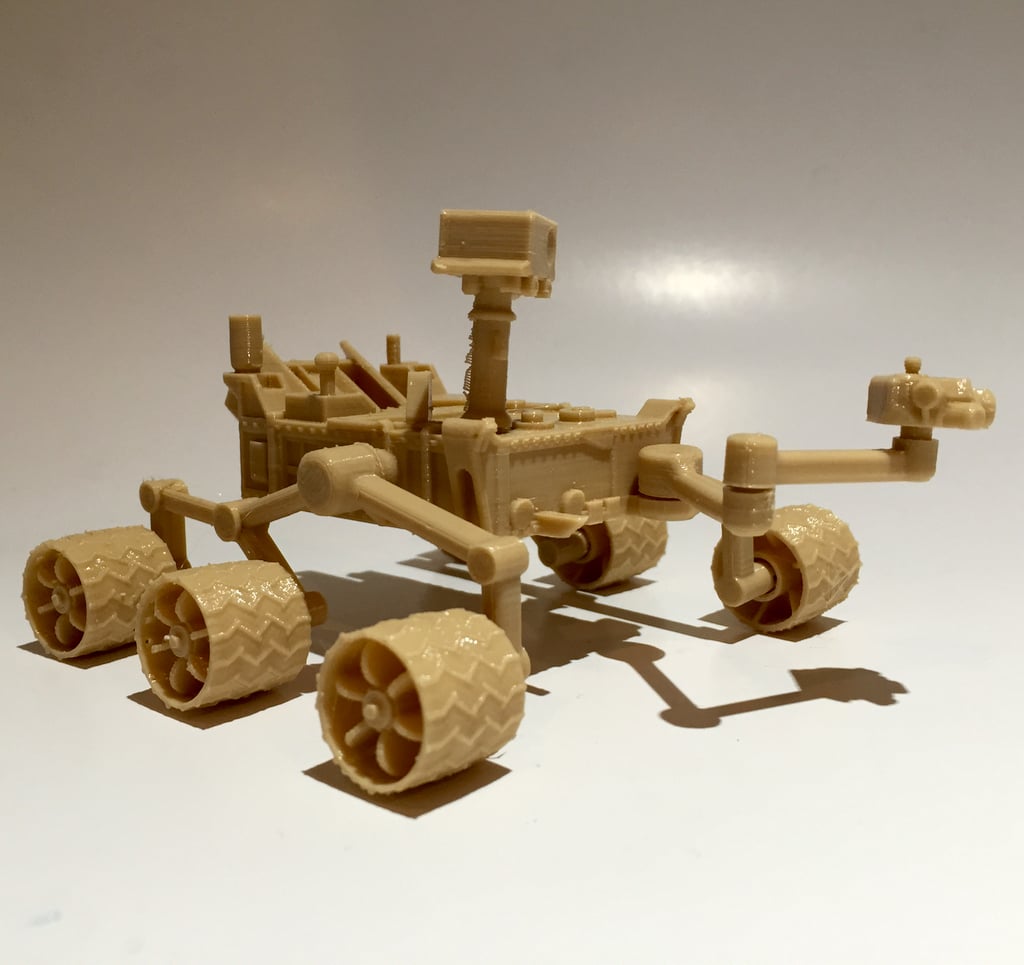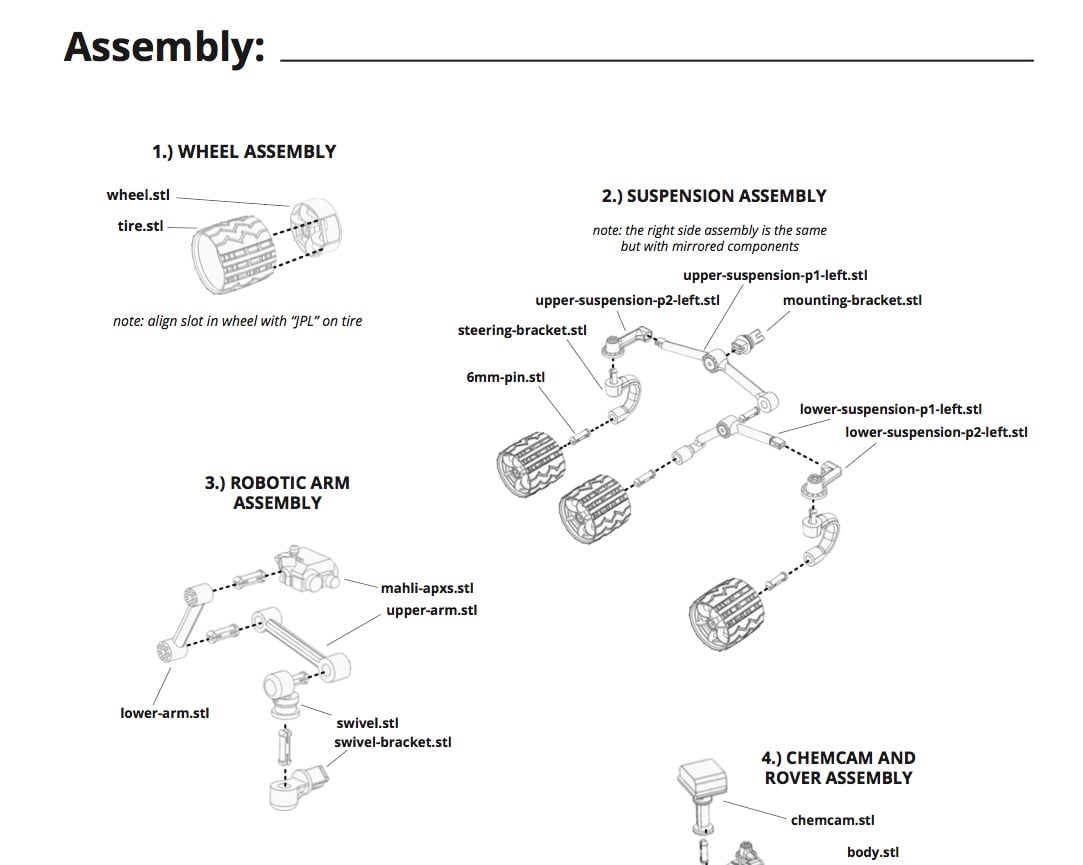
This week’s selection is NASA’s amazingly detailed 3D model of their distant Curiosity Rover.
This 3D model is actually a kit of parts that you can use to put together a rather realistic version of the Curiosity Rover, which currently trundles around Gale Carter on the Red Planet.
NASA has very fortunately provided a number of different 3D model files for this project: one set represents a smaller scale version, and the other a larger, more detailed version of the rover. The larger version has more parts and thus requires a bit more assembly.
For everyone’s convenience, the parts are already “plated”, or arranged in a pattern for immediate printing. The small version, for example, has all required parts in a single STL file laid flat, ready for printing. The larger version requires several plates worth of parts. In the event your print has a failure or two, they also provide separate files of each individual part to replace any poorly printed parts. According to NASA, the small version will take about 2.5 hours to print, while the larger will require 11 hours on typical desktop 3D printers.
The two versions each come with their own set of assembly instructions in PDF form. Although the assembly is pretty straightforward, it’s a good thing to have instructions. In fact, NASA has provided what might be the gold standard example of how to prepare instructions for this type of 3D parts assembly.
Generally the parts are pre-oriented in such a way to not require using support material, but a few pieces in fact do. For them, NASA has very conveniently provided pre-made support structures that both function well and are easily removed after printing. They’ve also added circular support tabs on the corners of the larger objects to help prevent warping during print operations. In other words, they’ve completely prepared the models – just print them!
The result looks just like images of the famous Rover, whether you print the larger or small version. We printed the small version, shown at top. We found assembly to be very simple, as the parts are designed for very easy fitting, even with the inaccuracies of some 3D printers. We did not require any adjustment to the attachment holes to make pins fit: it just worked.
If you’d like to try printing this excellent model, you can obtain the 29MB set of files from NASA’s 3D resources site at no charge.
Via NASA


